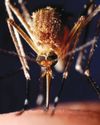
I started my lab in Boston back in 2012. At that time, one of the first projects we launched was to begin sequencing DNA from patients affected by severe muscle diseases like muscular dystrophy.
What became clear was that we desperately needed better databases of normal variation [in genomes] to make sense of the genetic changes that we were seeing in these patients. Imagine if you sequenced the DNA from a patient, and you find a new genetic change there. You need to know whether or not that is a really rare genetic change that is disease-causing, or whether it’s actually prevalent in the population, in which case it’s almost certainly not responsible for that patient’s disease.
So, we set about beginning to build a new database of human genetic variation by taking advantage of a whole bunch of other studies that had been done at the time. These were starting to pull together DNA sequencing data for a whole variety of different common adult-onset disorders, things like type 2 diabetes and heart disease.
HOW DO YOU COLLECT THE DATA?
We don’t actually generate the data ourselves. The gnomAD Project team are data parasites: we take advantage of the data that’s been generated by others when they agree to contribute that data to our project. We can then do the challenging process of pulling that data together and aggregating it and cleaning it up and then producing this big shared database that can be released to the rest of the world. It is, I think, a testament to the overall generosity of the human genomics community that we’ve been able to pull together such an extensive resource through that approach.
This story is from the November - December 2020 edition of BBC Earth.
Start your 7-day Magzter GOLD free trial to access thousands of curated premium stories, and 8,500+ magazines and newspapers.
Already a subscriber ? Sign In
This story is from the November - December 2020 edition of BBC Earth.
Start your 7-day Magzter GOLD free trial to access thousands of curated premium stories, and 8,500+ magazines and newspapers.
Already a subscriber? Sign In

World's First Malaria Vaccine
The World Health Organization’s director-general hails ‘historic moment’ as mass immunisation of African children begins

Is River Pollution Putting The Species In Jeopardy Again?
Ten years ago, it was jubilantly announced that o ers had returned to every county in England. But is river pollution putting the species in jeopardy again?

The Big Burnout
Long hours, low pay and a lack of appreciation — among other things — can make for a stressful workplace and lead to burnout. It’s something we should all be concerned about, because over half of the workforce reports feeling it

Putting Nature To Rights
More countries are enshrining the right to a clean environment into law. So if a company or government is impinging upon that right, you could take them to court

Mega Spaceship: Is It Possible For China To Build A Kilometre-Long Spacecraft?
Buoyed on by its successful Moon missions, China has launched a five-year study to investigate the possibility of building the biggest-ever spacecraft

Are We Getting Happier?
Enjoying more good days than bad? Feel like that bounce in your step’s getting bigger? HELEN RUSSELL looks into whether we’re all feeling more cheery…

“Unless the Japanese got the US off their backs in the Pacific, they believed they would face complete destruction”
Eighty years ago Japan’s surprise raid on Pearl Harbor forced the US offthe fence and into the Second World War. Ellie Cawthorne is making a new HistoryExtra podcast series about the attack, and she spoke to Christopher Harding about the long roots of Japan’s disastrous decision

Your Mysterious Brain
Science has mapped the surface of Mars and translated the code for life. By comparison, we know next to nothing about what’s between our ears. Over the next few pages, we ask leading scientists to answer some of the most important questions about our brains…

Why Do We Fall In Love?
Is it companionship, procreation or something more? DR ANNA MACHIN reveals what makes us so willing to become targets for Cupid’s arrow

Detecting the dead
Following personal tragedy, the creator of that most rational of literary figures, Sherlock Holmes, developed an obsession with spiritualism. Fiona Snailham and Anna Maria Barry explore the supernatural interests of Sir Arthur Conan Doyle